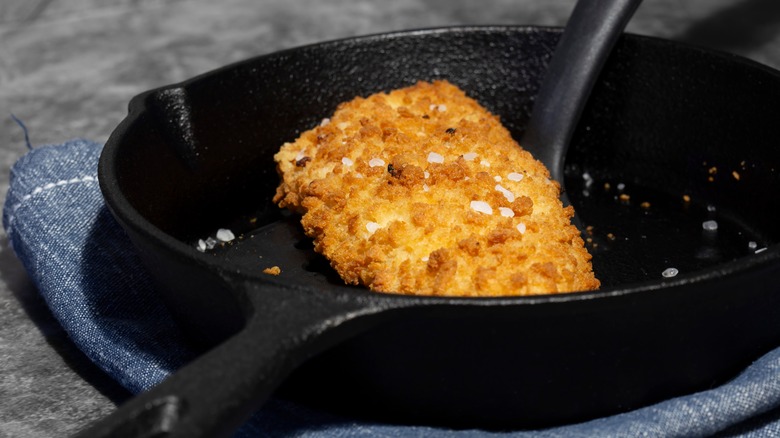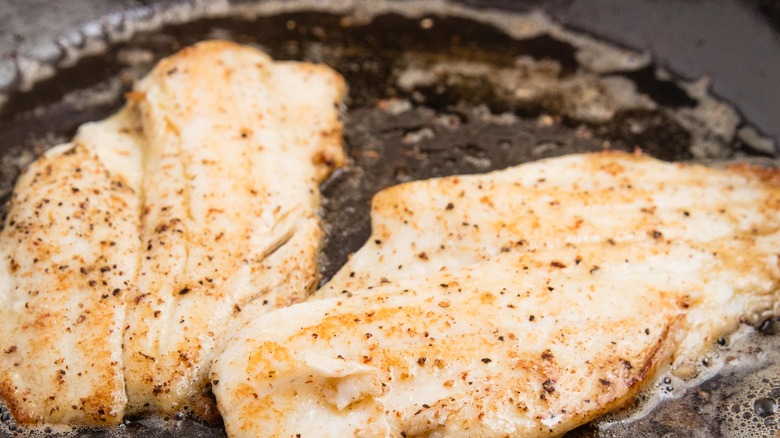A Cast Iron Skillet Is Key To Restaurant-Quality Fried Fish
Fried fish is crispy on the outside and flakey on the inside, utilizing the flavorful fat from the frying oil while still maintaining its light, tender nature. While you might leave the skillful execution of frying fish to the chefs at your favorite seafood restaurant, you can achieve restaurant-quality fried fish at home with the help of a cast iron skillet. Cast iron skillets are especially beneficial when cooking a delicate protein like fish because they are adept at controlling and maintaining temperatures. Consequently, cast iron will keep the oil hot across the entire surface of the pan throughout the frying process. It may take a while for your cast iron skillet to heat up but, once pre-heated to the desired temperature, it doesn't waver.
Fried fish requires precise temperatures and cooking times to achieve that crispy crust and tender interior. A cast iron skillet is the ideal cookware to ensure that the heat remains constant for a fast-cooking protein like fish so that you get an consistently crisp exterior and evenly cooked flesh. While other metals like aluminum and copper may be better heat conductors, introducing room temperature or cold fish to copper or aluminum pans will decrease the temperature of the oil, and unstable oil temperatures will have disastrous effects on the texture and flavor of fish.
How to fry fish in a cast iron pan
Whether you fry whole fish or filets in a cast iron pan, the best type of fish for frying is a firm-fleshed fish that'll stand up to bubbling oil and flipping. An important step to ensure the crispiest skin for your fried fish is to rid its surfaces of as much moisture as possible; oil and water don't mix, so wet skin or flesh will inhibit crisping and result in soggy and flavorless fish. Plus, drying your fish will also increase its ability to absorb seasonings.
Pat your fish dry with a paper towel before seasoning or dredging through flour breading. You can add seasonings to the dredging flour or the hot oil to infuse your fish with flavor. For example, this recipe for chili-garlic pan-fried fish fries garlic and chili flakes in the frying oil before adding the fish.
While you season and prepare your fish, you can slowly preheat the cast iron skillet over medium heat. Then, add enough oil to cover the skillet's surface completely. Skimping on the oil in your pan will increase the possibility that it sticks to the pan. That said, the best way to prevent fish from sticking to the skillet is to let it sit untouched in the frying pan for at least 20 seconds. This will give your fish enough time to absorb the frying oil, thereby allowing any potentially sticky surfaces to detach from the cast iron skillet.

